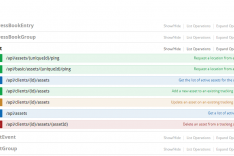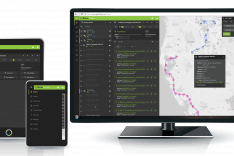Remote Data Ecosystems: Delivering Data
Series Overview
This article is the fifth and final in a series about what it takes to deploy a fully functioning remote data ecosystem for your organization. Anywhere you have assets in the field, whether it’s machinery, people, tools, light vehicles, or specialized equipment, those assets are generating information that could be valuable or critical to running a successful and efficient operation. Over the past few decades, connectivity and communications systems have improved to the point that there is no longer an excuse for not having that kind of information at your fingertips when you need it.
Unfortunately, a lot of people in decision making roles don’t have the expertise to set up a data ecosystem, and they rely on technology partners, who often take advantage of the knowledge gap. GSE believes in transparent business relationships, because well-informed customers and partners make better long-term decisions. For that reason, we have created this series to make sure everyone understands the functional components of a data ecosystem, and how a technology partner like GSE can help you build the one that best suits the budget and needs of your organization.
Go read and bookmark Part One (introduction) to quickly find any article in this series.
Remote Data Ecosystems Part 2 - Gathering Data
Remote Data Ecosystems Part 3 - Moving Data
Remote Data Ecosystems Part 4 - Transforming Data
Part Five: Delivering Data
Delivering data is the last component of a complete data ecosystem, and there are many ways to give people a good data experience in this lane. When people think of delivering data, they typically think of the many tools that help people visualize information, like map interfaces, reports, charts, graphs, and dashboards. The other two options are Data Routing and API, both of which are available with solutions provided by GSE.
Decision Point: How To Deliver Your Data
Simply put, delivering data is the last mile of the Remote Data Ecosystem, and the three major methods can be used in any combination to meet your needs as an organization. If you have your own software products that you like to use to visualize data, then some combination of Data Routing and API services will be best. If not, a Visualization portal is probably a good way to interface with your data, and maybe there's a reason to supplement with an API or Routing setup as well. No matter what is best for your organization, GSE is prepared and equipped to deliver the solution that makes the most sense.
Understanding Options: Data Routing
Data Routing refers to a service that builds a bridge from the network gateway to a storage location of your choice. Data Routing is best for organizations that have a massive data ecosystem and a subset of that ecosystem is off-grid or otherwise in need of satellite tracking. This is because for the most part, Data Routing services are best used with companies who have already established a complete data infrastructure with some kind of cloud or on-prem data storage solution, database schema, and data engineering system. The main goal is just to get data into that existing architecture, so an "open pipe" connection is the best method.
Most customers who use the Data Routing option also employ a Data Visualization product and one or more API services as well, as they are all not mutually exclusive. Rarely are all three services provided by the same entity, but it is certainly the case that GSE has customers who use a data routing service to feed directly into their cloud also log into the GSatTrack portal for some of the mapping functionality, and utilize the GSatTrack API to pull data into other applications without taxing their own API bandwidth.
Understanding Options: API
API refers to a service that retrieves, structures, and stores your data with a means of calling it into other products. APIs are great for anyone with a visualization product that they prefer to use, but no formal data infrastructure to support that product. The benefits of an API service are linked mostly to flexibility of data use and peace of mind for data storage and security. With an API, you're able to use your data with as many different tools as you want, which is nice when you have a large number of needs that can't be achieved by a single product. There's also no need to worry about data engineering, storage, or security, as the provider of your API will have a plan in place for each of those things as part of the service.
The GSatTrack API is available to customers as a singular delivery option, or as a compliment to Data Routing and/or Visualization. The GSatTrack API supports Get, Post, Put, and Delete operations, and has a number of these available for dozens of portal objects and features.
Understanding Options: Visualization
Visualization refers to a service that ingests your data, and displays it for you in a meaningful way. The number of options for data visualization tools in the market is incalculable, and more are made every year. From mapping platforms like GSatTrack to PowerBI, Tableau, and even Excel, the ways to ingest and display data are only growing as new technology becomes available, and open source libraries become more comprehensive. When you receive a mix of data from the field, it is important to choose visualization tools that are equipped to deliver the experience you need to make use of that data effectively.
GSatTrack has been the industry leader in remote data ecosystem visualization tools for nearly a decade. Founded on its mapping interface, it has expanded to include a number of ways to visualize data coming from the assets it tracks. The only product in the market that works with devices from any network, GSatTrack provides data visualization for mixed fleets, mixed networks, and mixed gather/move technology profiles. Among the best things about GSatTrack is its off-the-shelf readiness to support everything you need for your remote data ecosystem. GSE designed it to be the perfect last mile product in a wildly complex and decentralized industry.
GSE Can Do It All
For remote data ecosystems involving satellite, a large part of the service provided is retrieving data from the satellite network gateway, and being able to provide that information to customers. GSE is unique in its ability to retrieve and deliver data from all of the major providers (Inmarsat, Iridium, and Globalstar) as well as a number of smaller providers like Thuraya, Ligado, and Argos/CLS. Doubly unique is GSE's ability to deliver data via all three major methods. When you're choosing a partner for your remote data ecosystem, it's probably best to choose the one that can do what you need, and GSE has established itself as the best option for the satellite world.
As always, the best advice we have for you is to reach out to us directly, and let us help you understand if your remote data ecosystem strategy is the best one for you. Then we can examine the ways to provide a solution that delivers on that data strategy with the best and most budget-conscious options for gathering, moving, transforming, and delivering your data.
Series Conclusion
We appreciate the opportunity to help dispel some of the confusion that comes with setting up a remote data ecosystem. We are confident that anyone who reads this entire series will learn things about what it takes to build a satellite-based data gathering operation, and will at least come to a point of being able to understand the different components of a solution. To recap, article two in this series covered the origin of data in an ecosystem, from the sensors that create data to the hardware that packages it up to be sent, everything you need to know can be found in part two (Gathering Data). Article three in this series covered the movement of data over a satellite network, and all of the ways in which the network decision changes solution options can be found in part three (Moving Data). Article four in this series covered the transformation of data that occurs on the edge, in the cloud, or both, and if you're still unsure of how it might be best to go about that, part four (Transforming Data) has your answers.





